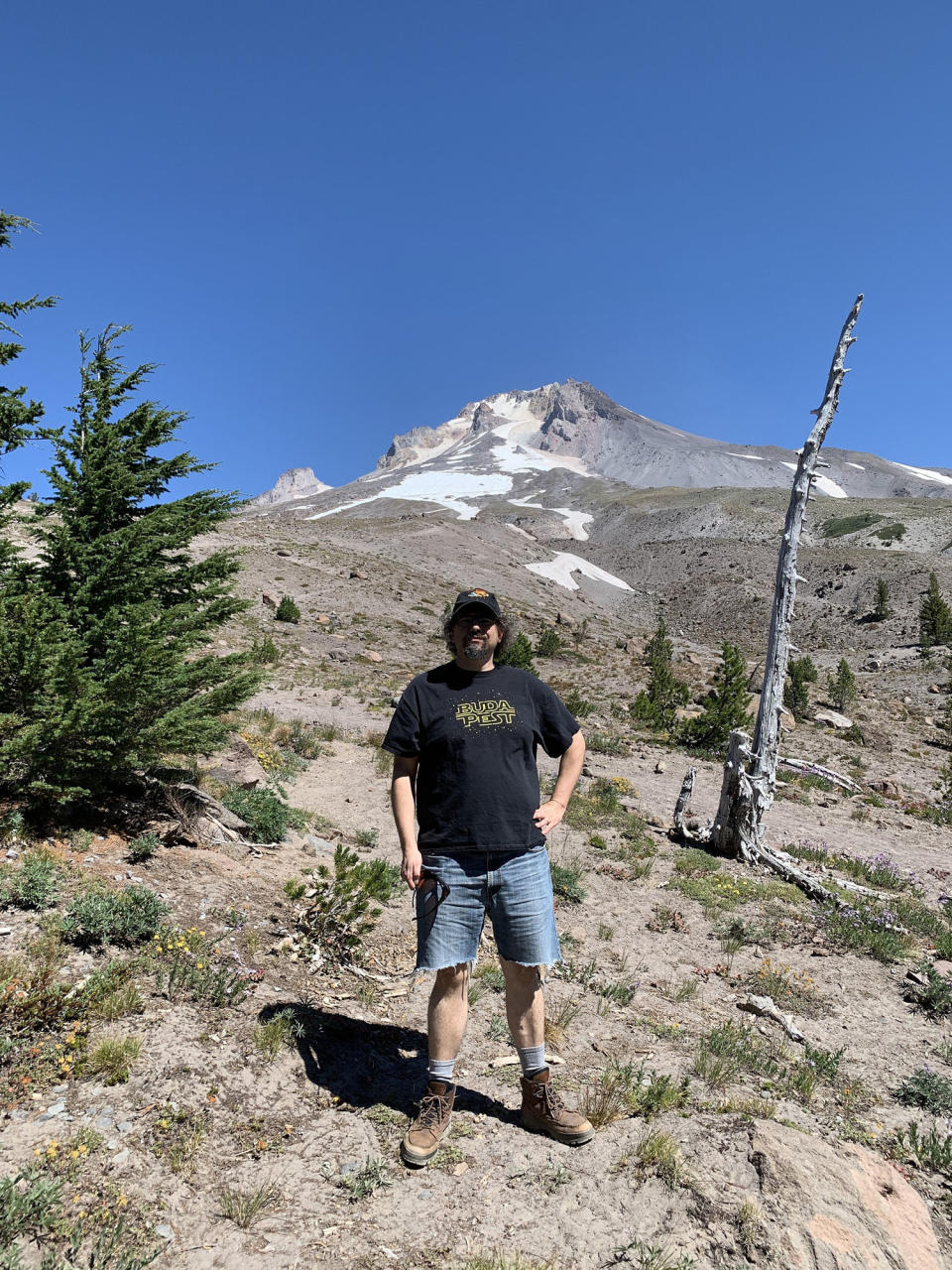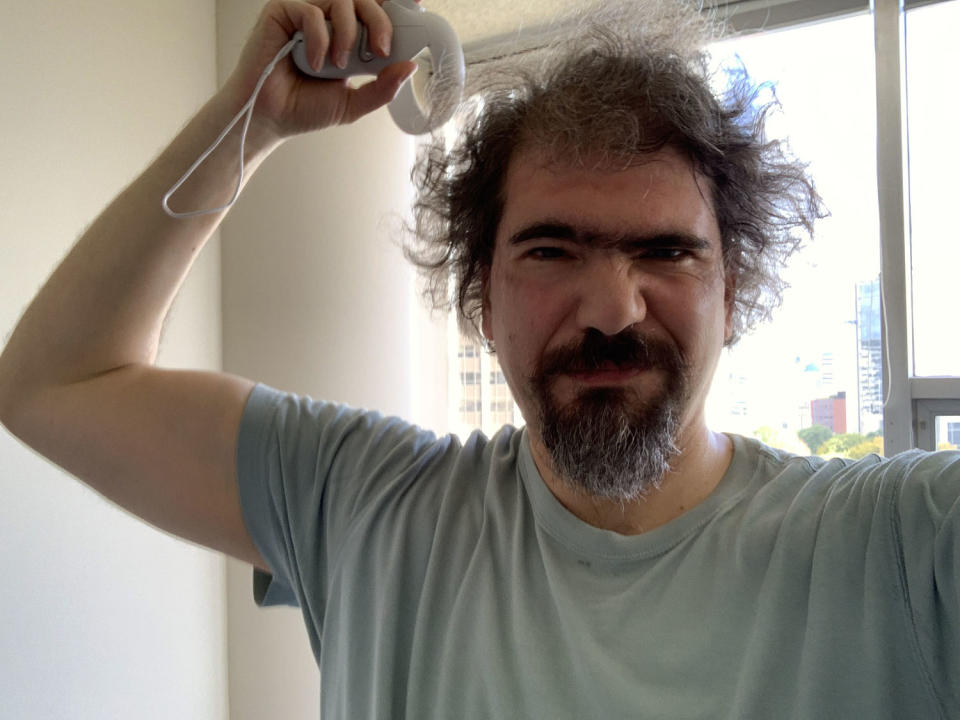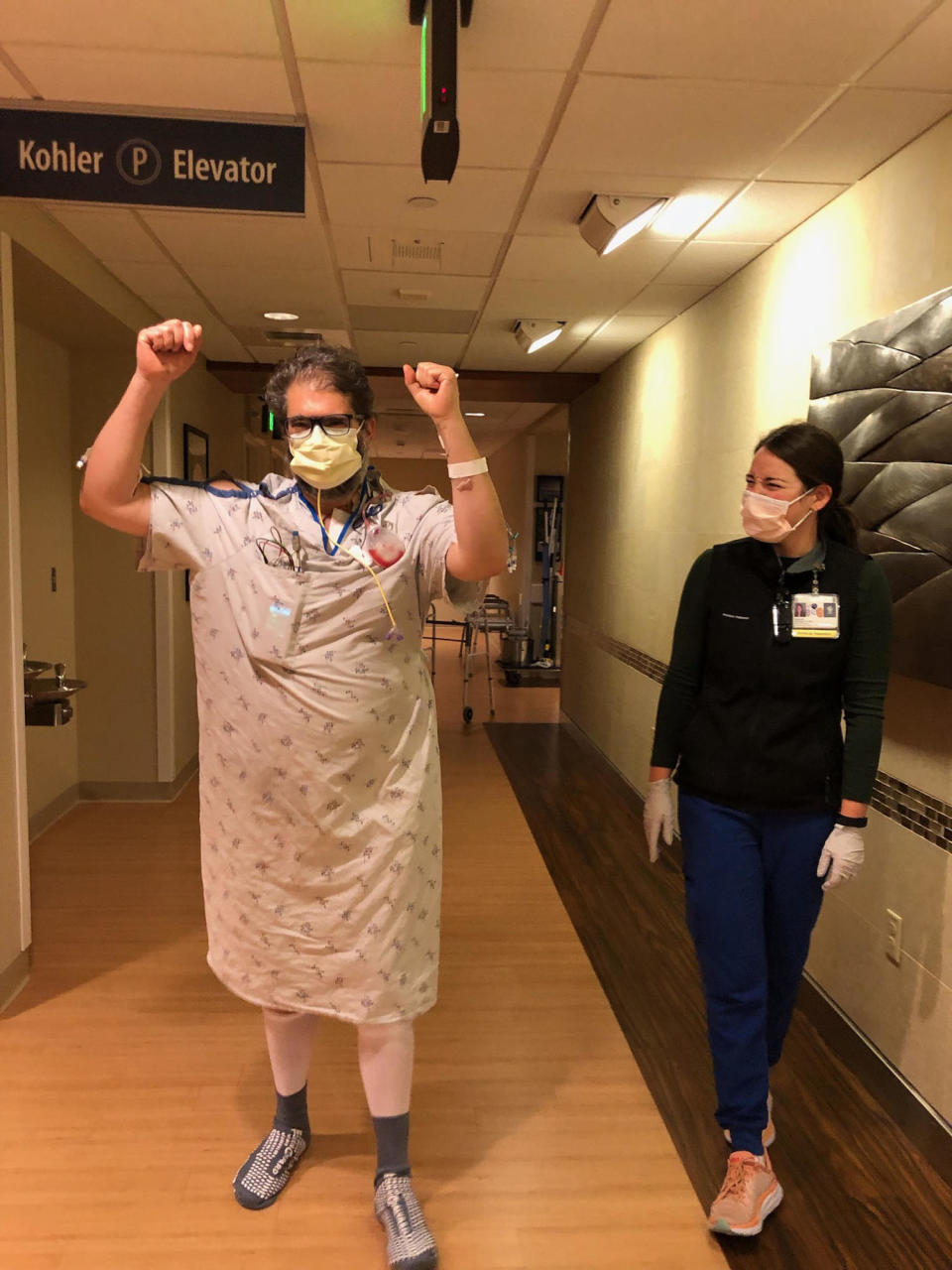Man underwent a 'dangerous' heart surgery. He credits a VR workout for helping him survive it
Welcome to Start TODAY. Sign up for our Start TODAY newsletter to receive daily inspiration sent to your inbox — and join us on Instagram!
As a psychologist and researcher, Erick Gallun of Portland, Ore., wanted to learn more about how he could use virtual reality in his work. That interest led him down a path that may have saved his life.
In May 2020, he saw an ad on Facebook for Supernatural, a VR exercise program. “I didn’t start out looking for any kind of workout experience. I just wanted to check out the VR. But it was the middle of the pandemic, and I was feeling pretty tired of being shut in,” he says.
With Supernatural, you wear a VR headset and use two hand controllers for full-body boxing and cardio workouts, and you can join stretching and meditation classes. You can choose locations ranging from a volcanic crater to the Italian Alps.
Gallun, 52, loved those outdoor settings, especially since he missed all the travel he used to do before the pandemic. He thought the music was fantastic, and he discovered he liked the coaching, which surprised him. “I’ve done swimming and hiking, but they are very solitary. I started to really enjoy having somebody working out there with me,” he says.
He remembers when one of the coaches referred to him as an athlete: “That was super powerful. That meant something to me.”

He built a fitness routine during the pandemic
Gallun started doing the workouts daily. “It was a solace during lockdown, and I felt like I was getting better and better. But mostly, I was just doing it for fun. It was a nice break in the day to get my body moving,” he says. His wife started doing the workouts as well.
They weren’t paying much attention to how their fitness was improving. But three months later, when they hiked Mt. Hood, they were surprised by how much more strength and stamina they had.
“We just walked right up the mountain. We thought, ‘What is happening?’ We hadn’t noticed how much fitness it was giving us,” he says.
Gallun enjoyed the workouts so much that he kept up with them for years. The strength he built with it helped him survive a life-threatening heart condition in December 2022.

He had stabbing chest pains, but it wasn't a heart attack
“I was in the shower, and I had stabbing pains in my chest. I had not ever had anything like that before. I was not at risk for any kind of cardiological problems,” Gallun says.
He told his wife about the pain and that he was feeling a little confused, and she called 911 right away.
“At the emergency room, it took them a little while to figure out what was wrong, because I wasn’t having a heart attack. I was still a little confused, but the pain had ended when I was in the ambulance,” he says.
A CT scan found a tear in his aorta, the large blood vessel that takes blood from your heart to the rest of your body. He needed surgery right away, and there was a good chance he wouldn’t survive the operation.
He prepared for the worst
“I said goodbye to my wife. I said, ‘Thank you very much for the wonderful 30 years we’ve had together. I hope we have more, but if not, I love you,’” he says.
During surgery, they discovered that the problem was even worse than what the CT scan had shown. His entire aorta was torn.
Surgeons chilled his body down to 65 degrees, put a graft in from his neck to his abdomen, and placed a mechanical valve in his heart. “They described it as three simultaneous open-heart surgeries,” he says.
The surgery lasted nine hours, and when they woke him up to take out the ventilator, he couldn’t figure out where he was or what was going on. They had to put him back under and try again later. “I don’t remember those days, but for my wife, it was super-intense. I came to about three days later,” he says. He was in the cardiac intensive care unit for four days and hospitalized for another five days.
Gallum says the medical notes from that time kept referring to how strong he was. When they tried to wake him, he would attempt to pull the ventilator tube out of his throat. “It would take three nurses to hold me down,” he says.

The road to healing was complicated
Gallun had an incision that ran from his neck almost to his belly button, so he couldn’t put his hands over his head or behind his back. If he did, he might open the incision.
He had a nurse and a physical therapist who came in for home visits. At first, he couldn’t walk very far, and he needed to use a walker. “I started walking around the hall in my building, and after about a month, I got to the point where I could go outside,” he says.
His voice had been damaged because the nerve that controls one of the vocal cords wraps around the aorta and was injured during the surgery. “My voice was very hoarse and quiet, and I could only get two words out,” he says. He needed an operation to put an implant into his vocal cords, and now he can speak normally.

He slowly returned to exercise
About eight weeks after the surgery, Gallun started cardiac rehab. There, he walked on a treadmill, keeping his effort low so he wouldn’t cause any damage to his repaired aorta.
“I did that for three days a week for three months, and then I was finally able to graduate from cardiac rehab and start my own workout regimen. It was not too long after that I was able to do Supernatural again. I posted a video of myself just crying with joy,” he says.
Now, his chest and shoulders are still a little tight, so he can’t work out as vigorously as he would like. And he can only use Supernatural for ten or 15 minutes before he feels wiped out. “It can’t be my main workout anymore, but I’m hopeful that I can bring it back. And my wife and I are working out at the gym together,” he says.
There, he walks on the treadmill for 50 minutes three days a week, and he’s been working on walking up stairs. He has to be careful not to do any exercise that causes him to strain, since that could damage the surgical site. “I’ve been doing weightlifting to try to get my muscles stronger,” he says.
He credits his fitness routine for his health and mindset today
“Two and a half years of doing Supernatural very regularly didn’t just give me the ability to be strong. It gave me the ability to see myself as somebody who was athletic, which I wasn’t before. I really credit Supernatural with giving me that view of myself,” Gallun says.
He and his wife are finding new ways to travel. “She’s gone with me to two conferences, and we’ve decided to have a vacation and work trip in Europe,” he says. In April, they will spend two weeks in Slovakia at a conference, and then two weeks in Prague with friends.
In March 2023, he was able to return to work for six hours a week, and by May, he could manage four hours a day, five days a week, which is still his schedule. He’d like to be able to work more, but his energy level isn’t there.
“I asked my cardiologist about this in September, and she said, ‘Let’s be very clear here. You had an extraordinarily dangerous and difficult surgery. You survived it, and you are living independently. You can exercise. You can work. That is not common for people. You should be really, really pleased.’ So, I’m being really pleased with the life that I have, because it’s pretty awesome,” he says.
This article was originally published on TODAY.com

